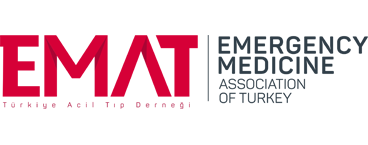Comparison of qSOFA and SOFA score for predicting mortality in severe sepsis and septic shock patients in the emergency department of a low middle income country
Muhammad Akbar Baig1, Sadaf Sheikh2, Erfaan Hussain3, Samina Bakhtawar4, Muhammad Subhan Khan5, Syed Mujtaba6, Shahan Waheed1
1Department of Emergency Medicine, Aga Khan University Hospital, Stadium Road, P.O. Box 3500, Karachi, 74800, Pakistan
2Department of Emergency Medicine, Aga Khan University Hospital, Stadium Road, P.O. Box 3500, Karachi, 74800, Pakistan
3Section of Pulmonary and Critical Care Medicine, Department of Medicine, Aga Khan University Hospital, Stadium Road, P.O. Box 3500, Karachi, 74800, Pakistan
4People's Primary Healthcare Initiative (PPHI)- Sindh, C-27/1, Block-2, Umer Sharif Park, Block-2 Clifton, Karachi, Pakistan
5Department of Emergency Medicine, Aga Khan University Hospital, Stadium Road, P.O. Box 3500, Karachi, 74800, Pakistan
6Department of Emergency Medicine, Aga Khan University Hospital, Stadium Road, P.O. Box 3500, Karachi, 74800, Pakistan
Keywords: qSOFA, SOFA, Sepsis
Abstract
Objective: We aimed to determine a comparison between the Quick Sequential Organ Failure Assessment (qSOFA) score and existing Sequential Organ Failure Assessment (SOFA) score when applied to severe sepsis & septic shock patients in the Emergency Department (ED) for prediction of in-hospital mortality in the setting of a tertiary care hospital ED in a low-middle income country.
Method: We conducted a prospective observational cohort study on 760 subjects. The qSOFA, SOFA score and in-hospital mortality were assessed by area under the receiver operating curve (AUROC). We calculated sensitivity and specificity for each score for outcomes at cut-offs of 0.92 and 0.63 for qSOFA and SOFA in Severe Sepsis respectively and 0.89 and 0.63 for qSOFA and SOFA in Septic shock respectively.
Results: In patients with severe sepsis, the AUROC of qSOFA for predicting mortality in subjects was 0.92 (95% CI; 0.89–0.94) with 96% sensitivity and 87% specificity in comparison to the AUROC of SOFA score which was 0.63 (95% CI; 0.55–0.70 with 71% sensitivity and 57% specificity. In patients with septic shock, the AUROC of qSOFA for predicting mortality in subjects was 0.89 (95% CI; 0.85–0.92) with 92% sensitivity and 85% specificity in comparison to the AUROC of SOFA score which was 0.63 (95% CI; 0.55–0.70 with 70% sensitivity and 59% specificity.
Conclusion: Our study concludes that qSOFA score is an effective tool at predicting in hospital mortality in comparison to SOFA score when applied to severe sepsis and septic shock patients in the setting of a tertiary care hospital ED of a low-middle income country however, further studies are needed before application for this purpose.

